 |
News
Web Design & Development Guide
News
Home
New level of interaction at SSAC meeting tomorrow
Weâre always trying to improve the quality of remote participation at ICANN meetings and tomorrow in Cairo will see a first trial of the most interactive session we have ever run.
The SSAC meeting at 11.15am local time, Monday 3 November, will be run over Adobeâs Connect software and by clicking on a simple link, in one window in your browser you should be able to:
* Watch live video of the meeting
* Hear the meeting
* Read real-time text scribing
* View the presenterâs slides as he/she goes through them
* Ask questions online, and
* Send chat messages to others online
This is an experiment so we would encourage all of you to try it out and report back with what happened at your end. If it proves successful and people like it, we will roll it out further at the next meeting in Mexico City.
So, hereâs the link: http://icann.na3.acrobat.com/r40667447/
Hopefully see you all tomorrow at 11.15am Cairo time.
Embed ICANN meeting chatrooms on your site
Over the past four meetings, we have experimented with different approaches to chatrooms as a way of providing remote participants with an opportunity to interact in real time with a meeting.
There have been pluses and minuses to each approach. With some, slow responses times; others, heavy server loads. We have tried different types: PHP, Flash, ICQ. In each case some people canât get into them whether because of technical knowledge or operating system or browser software.
Last time around, people told us that having to go to a particular webpage in order to get into the chatroom for that meeting was adding a step and so reducing their likelihood of joining.
So we are testing another approach in Cairo for the Improving Institutional Confidence session on Thursday 6 November at 2pm: embedded chatrooms.
This time, we have used a third-party provider that runs the chatrooms on its servers, and allows people to embed Flash code on peopleâs sites that point to the same chatroom. So, the idea is that ICANN sets up chatrooms, provides the community with the code and you can all embed the chatroom wherever you wish online - our main hope is your blogs.
This means multiple entry points to the same chatroom. Which would ideally mean that particular meetings that people are interested will see them posting that meetingâs chatroom to their own pages. We donât know if this will work well, or if people will find it valuable, itâs an experiment. But for anyone interested in improving remote participation, please do try it out and get back to us.
You should be able to see the chatroom for the IIC session below. To grab the code for the chatroom to embed into your site, just click on âEmbed Chatroom!â on the bottom left of the chatroom below, and it will show up. Incidentally, the Cairo meeting page for the IIC meeting is here: http://cai.icann.org/en/6nov08/iic.
Whatâs happening with Whois compliance activities?
Whois has been a complex issue within ICANN, and continues to receive attention at the policy level. While this important policy work goes on, ICANN still has the clear responsibility to enforce existing Whois provisions in the Registrar Accreditation Agreement (RAA), and to better understand the real world status of Whois accuracy and Whois related services (e.g. privacy and proxy registration services).
So, what is ICANN doing for Whois compliance? Here is a recent survey of activities:
1. A Whois Accuracy Study to Assess the Accuracy of Registrant Data in the Whois Database
Understanding the Whois environment is important. The GNSO is considering, and the GAC has called for, various Whois-related studies. You may or may not know that there has been study work underway, and some new work is just starting. There has been a long-running and challenging effort underway to statistically answer the question âHow accurate is Whois data?â After multiple starts on such a study, an initial study/contract phase has just been completed with the National Opinion Research Center (associated with the University of Chicago) to design such a study. NORC recently provided ICANN with a proposed methodology for selecting a representative sample of domain names and a proposed methodology for verifying the accuracy of Whois data. ICANN is analyzing this information and weâre optimistic that this will turn into an executable study plan within the next few weeks.
2. A Registrar Privacy/Proxy Registration Services Study to Assess the Extent to Which Registrants Are Using Privacy/Proxy Registration Services
ICANN has initiated a study of Proxy/Privacy Registration Services. The purpose of this study is to determine the extent to which registrants are using privacy and proxy registration services and to obtain information regarding the business models used to provide such services. As part of this study, ICANN will send a survey to all ICANN-accredited registrars requesting that they provide, among other things, information regarding the number of registrations they manage that currently use privacy or proxy registration services. The survey is being finalized and it is anticipated that registrars will receive ICANNâs survey before the end of 2008.
3. ICANNâs Whois Data Problem Report System (WDPRS) is Undergoing a Redesign to Improve Functionality and Meet Community Needs
The Whois Data Problem Report System (WDPRS), implemented in 2002 to assist registrars in complying with their obligation to investigate Whois inaccuracy claims, is undergoing a system redesign. ICANN frequently receives thousands of Whois inaccuracy claims through this system per day. The redesigned software system (to be completed in November), will include components that allow for better, hands-on analysis of actual problem reports and processing of bulk Whois inaccuracy claims. Iâm happy to note that there has been consultation with high volume submitters and representatives from the Intellectual Property and Registrar constituencies regarding the system redesign (these high volume submitters account for about 80% of inaccuracy complaints filed through the WDPRS.)
A demonstration of the redesigned WDPRS will be provided at the Cairo meeting as well as information regarding ICANNâs findings relative to our manual reviews of Whois inaccuracy claims. This work should result in quality improvements for users of the WDPRS and system improvements that allow ICANN to better monitor Whois accuracy compliance. Moreover, we anticipate the use of the redesigned WDPRS to lead to a better understanding of the environment: How long does it take to go from an inaccuracy complaint to resolution of that complaint? How many complaints are successfully resolved the first time?
4. Recent Whois-Related Enforcement Action â Notices of Breach
The community may have noted that in October two registrars, Joker.com and DNS.com.cn, were sent breach notices regarding insufficient follow-up on complaints of Whois inaccuracy. Inaccuracy investigation, per the RAA, is a requirement and it is important that this requirement be taken seriously.
ICANN analyzed both registrarsâ responses to ICANNâs notices of breach and found that Joker.com appeared to take reasonable steps to investigate the Whois inaccuracy claims provided. Conversely, DNS.com.cn was found non-compliant, as it failed to take reasonable steps to investigate the Whois inaccuracies indentified by ICANN.
Consistent with RAA requirements, DNS.com.cn cured the cited breach within 15 days to avoid termination by ICANN. However, in an effort to ensure that DNS.com.cn complies with the registrar Whois accuracy requirements set forth in Section 3.7.8 of the RAA, ICANN developed a remediation plan that requires DNS.com.cn to provide monthly reports identifying, among other things, exactly what steps were taken to investigate each Whois inaccuracy claim sent to DNS.com.cn via the WDPRS. DNS.com.cn has agreed to remain on ICANNâs remediation plan for six months.
5. Whois Data Inaccuracy Audit - Ongoing
ICANN has conducted a Whois Data Inaccuracy Investigation Audit, and will continue to do this in the future. Thirty ICANN-accredited registrars were part of the audit. Each of these 30 registrars was asked to provide specific information on 10 domain names randomly selected from the WDPRS. From the selected sample, 187 domain names were included in the audit. Registrars took action on 89 of them, and as of 12 June 2008, registrars report they are currently investigating an additional 26 domain names.
6. Whois Data Reminder Policy Audit - Ongoing
The Whois Data Reminder Policy Compliance Audit has been ongoing. In the first half of 2008, reports showed 850 of 901 registrars responded, and 98% of responders were found in compliance. (Follow-up action has been taken with non-respondants.) This means that the vast majority of gTLD registrants are contacted at least annually regarding updating their Whois records.
Conclusion
ICANN will continue to broaden its efforts to enforce the Whois provisions of the RAA and study trends that impact Whois accuracy, but I thought it would be useful to review the plans for future Whois compliance action and the Whois compliance actions underway right now.
For current information regarding ICANNâs Whois-related compliance activities, community members are encouraged to read and subscribe to the monthly ICANN Compliance Newsletter (see
http://www.icann.org/en/compliance/newsletter/). In almost every issue, youâll find some update on Whois compliance actions.
Hereâs how we enter the .future
So, after years of policy and development work, yesterday ICANN released a draft version of the Applicant Guidebook for those interested in applying for a new âgeneric top-level domainâ.
Or, as Associated Press put it âpreliminary guidelines for the introduction of hundreds, perhaps thousands, of alternatives to â.comâ in the first sweeping changes to the networkâs 25-year-old address system.â
A huge amount of thinking and work has gone into this, as anyone who reads the six-module guidebook and the accompanying explanatory memoranda will realise. But because it is such a complex issue - opening up the Internet like never before - we need more eyes on it than the GNSO representatives and the ICANN staff that have got it to this point.
Thatâs why the whole thing is out to public comment. And because it is a big document, we have set up different comment areas for each module (as well as one for the guidebook as a whole in case people prefer to comment that way).
Alot of people have raised concerns about expanding the namespace over the past few years, and those comments have been listened to and taken into account. ICANN has said âwait until we produce the draft RFP, then if you still have concerns, letâs talkâ.
Well, that time has come. The documents are out in English; soon they will be out in Arabic, Chinese, French, Spanish and Russian. We will have a large number of sessions on them in Cairo in two weeks; we have a 45-day comment period open. We will have more sessions and more comment periods before this is finalised.
So, if you want to help guide the future evolution of the Internet, nowâs the time to download a few documents, read them, give it some thought and then share with both the community and the world your thoughts on how we do this right. ICANN looks forward to hearing from you.
Please visit the specific public comment page set up for supplying your feedback at: http://www.icann.org/en/topics/new-gtld-comments-en.htm
Update: Iâve just been told that our first correction is in. George Kirikos has noticed a discrepancy on the issue of price controls on previous new gTLDs, so we have added a clarifying note. Thanks George, please keep âem coming.
You can download the Guidebook and its modules (all pdf files) at the links below:
Individual modules:
Remembering Jon: Looking Beyond the Decade
 A decade has passed since Jon Postel left our midst. It seems timely to look back beyond that decade and to look forward beyond a decade hence. It seems ironic that a man who took special joy in natural surroundings, who hiked the Muir Trail and spent precious time in the high Sierras was also deeply involved in that most artificial of enterprises, the Internet. As the Internet Assigned Numbers Authority (IANA) and the RFC editor, Jon could hardly have chosen more polar interests. Perhaps the business of the artificial world was precisely what stimulated his interest in the natural one. A decade has passed since Jon Postel left our midst. It seems timely to look back beyond that decade and to look forward beyond a decade hence. It seems ironic that a man who took special joy in natural surroundings, who hiked the Muir Trail and spent precious time in the high Sierras was also deeply involved in that most artificial of enterprises, the Internet. As the Internet Assigned Numbers Authority (IANA) and the RFC editor, Jon could hardly have chosen more polar interests. Perhaps the business of the artificial world was precisely what stimulated his interest in the natural one.
As a graduate student at UCLA in the late 1960s, Jon was deeply involved in the ARPANET project, becoming the first custodian of the Request for Comment note series inaugurated by Stephen D. Crocker. He also undertook to serve as the âNumbers Czarâ tracking Domain Names, Internet Addresses, and all the parameters, numeric and otherwise, that were key to the successful functioning of the burgeoning ARPANET and, later, Internet protocols. His career took him to the east and west coasts of the United States but ultimately led him to the University of Southern Californiaâs Information Sciences Institute (ISI) where he joined his colleagues, Danny Cohen, Joyce K. Reynolds, Daniel Lynch, Paul Mockapetris and Robert Braden, among many others, who were themselves to play important roles in the evolution of the Internet.
It was at ISI that Jon served longest and as the end of the 20th Century approached, began to fashion an institutional home for the work he had so passionately and effectively carried out in support of the Internet. In consultation with many colleagues but particularly with Joseph Sims of the Jones Day law firm and Ira Magaziner, then at the Clinton administration White House, Jon worked to design an institution to assume the IANA responsibilities. Although the path to its creation was rocky, the Internet Corporation for Assigned Names and Numbers (ICANN) was officially created in early October, 1998, just two weeks before Jonâs untimely death on October 16.
In 1998 there were an estimated 30 million computers on the Internet and an estimated 70 million users. In the ensuing decade, the user population has grown to almost 1.5 billion and the number of servers on the Internet now exceeds 500 million (not counting episodically connected laptops, personal digital assistants and other such devices). As this decade comes to a close, the Domain Name System is undergoing a major change to accommodate the use of non-Latin character sets in recognition that the worldâs languages are not exclusively expressible in one script. A tidal wave of newly Internet-enabled devices as well as the increasing penetration of Internet access in the worldâs population is consuming what remains of the current IPv4 address space, driving the need to adopt the much larger IPv6 address space in parallel with the older one. Over three billion mobiles are in use and roughly 15% of these are already Internet-enabled.
Jon would take considerable satisfaction knowing that the institution he worked hard to create has survived and contributed materially to the stability of the Internet. Not only has ICANN managed to meet the serious demands of Internet growth and importance in all aspects of society, but it has become a worked example of a new kind of international body that embraces and perhaps even defines a multi-stakeholder model of policy making. Governments, civil society, the private sector and the technical community are accommodated in the ICANN policy development process. By no means a perfect and frictionless process, it nonetheless has managed to take decisions and to adapt to the changing demands and new business developments rooted in the spread of the Internet around the globe.
Always a strong believer in the open and bottom-up style of the Internet, Jon would also be pleased to see that the management of the Internet address space has become regionalized and that there are now five Regional Internet Registries cooperating on global policy and serving and adapting to regional needs as they evolve. He would be equally relieved to find that the loose collaboration of DNS root zone operators has withstood the test of time and the demands of a hugely larger Internet, showing that their commitment has served the Internet community well. Jon put this strong belief into practice as he was founder and ex-officio trustee of ARIN.
As the very first individual member of the Internet Society he helped to found in 1992, Jon would certainly be pleased that it has become a key contributor to the support of the Internet protocol standards process, as intended. The Internet Architecture Board and Internet Engineering and Research Task Forces as well as the RFC editing functions all receive substantial support from the Internet Society. He might be surprised and pleased to discover that much of this support is derived from the Internet Societyâs creation of the Public Internet Registry to operate the .ORG top level domain registry. The Internet Societyâs scope has increased significantly as a consequence of this stable support and it contributes to global education and training about the Internet as well as to the broad policy developments needed for effective use of this new communication infrastructure.
As a computer scientist and naturalist, Jon would also be fascinated and excited by the development of an interplanetary extension of the Internet to support manned and robotic exploration of the Solar System. This very month, the Jet Propulsion Laboratory will begin testing of an interplanetary protocol using the Deep Impact spacecraft now in eccentric orbit around the sun. This project began almost exactly ten years ago and is reaching a major milestone as the first decade of the 21st Century comes to an end.
It is probable that Jon would not agree with all the various choices and decisions that have been made regarding the Internet in the last ten years and it is worth remembering his philosophical view:
âBe conservative in what you send and liberal in what you receive.â
Of course, he meant this in the context of detailed protocols but it also serves as a reminder that in a multi-stakeholder world, accommodation and understanding can go a long way towards reaching consensus or, failing that, at least toleration of choices that might not be at the top of everyoneâs list.
No one, not even someone of Jonâs vision, can predict where the Internet will end up decades hence. It is certain, however, that it will evolve and that this evolution will come, in large measure, from its users. Virtually all the most interesting new applications of the Internet have come, not from the providers of various Internet-based services but from ordinary users with extraordinary ideas and the skills to try things out. That they are able to do this is a consequence of the largely open and non-discriminatory access to the Internet that has prevailed over the past decade. Maintaining this spirit of open access is the key to further development and it seems a reasonable speculation that if Jon were still with us, he would be in the forefront of the Internet community in vocal and articulate support of that view.
A ten-year toast seems in order. Hereâs to Jonathan B. Postel, a man who went about his work diligently and humbly, who served all who wished to partake of the Internet and to contribute to it, and who did so asking nothing in return but the satisfaction of a job well done and a world open to new ideas.
Vint Cerf
Woodhurst
October 2008
Lâagenda de la rĂ©union du Caire est en ligne
La prochaine rĂ©union de lâICANN se tiendra du 1er au 7 novembre 2008 au Caire, Capitale de lâEgypte. Lâagenda est maintenant en ligne sur le site dĂ©diĂ© Ă cette 3e et derniĂšre rĂ©union internationale de 2008.
AprĂšs la rĂ©union du Conseil du GNSO le samedi 1er novembre, plusieurs ateliers sont prĂ©vus dĂšs le dimanche, notamment des sessions dâexplications sur deux des sujets phares du moment : les nouveaux gTLDs et les IDNs.
Cette 33e rĂ©union ICANN sera officiellement ouverte le lundi 3 novembre avec la cĂ©rĂ©monie dâaccueil, suivie de la prĂ©sentation par le prĂ©sident de lâICANN de son rapport. Un atelier est Ă©galement prĂ©vu Ă 11h15 pour expliquer le projet dâappel Ă candidatures pour la crĂ©ation de nouveaux gTLDs.
La gouvernance sera le sujet principal mercredi, avec des ateliers liĂ©s aux aspects de gouvernance de lâInternet et aussi le âPSCâ (Presidentâs Strategy Committee, câest-Ă -dire le ComitĂ© StratĂ©gique du PrĂ©sident, dont la fonction est de travailler sur les moyens de renforcer le modĂšle multi-acteurs de lâICANN).
Le jeudi 6 novembre sera la journĂ©e du forum public durant lequel chacun peut sâexprimer librement et Ă©changer avec les membres du Conseil dâadministration de lâICANN. La rĂ©union se terminera le vendredi 7 novembre par la rĂ©union du Conseil.
Which region is taking the lead in IPv6 deployment?
IPv6 is in the news because the mainstream media have started to pick up the fact that IPv4 will be fully allocated in the next two or three years. And IPv6 deployment is important if we want to keep the Internet growing sustainably.
So where is IPv6 deployment most evident? It?s a very difficult thing to measure. It is difficult to measure the amount of IPv6 traffic as so much of it is tunneled inside of IPv4. And anyway, tunneled traffic is probably from end users rather than ISPs, but we need ISPs to deploy IPv6 to allow the Internet to grow. So how can we see where ISPs are deploying IPv6 in their networks?
One possible measure of IPv6 deployment in ISPs is the number of IPv6 address blocks (prefixes) seen in the routing table in comparison with the the number of autonomous systems (ASs - roughly equivalent to ISPs) in a region. Geoff Huston has a regional breakdown of advertised ASs on his web site and the SixXS project has a regional breakdown of the IPv6 address blocks visible per region on its web site.
AfriNIC, the Regional Internet Registry for Africa and parts of the Indian Ocean, has a higher proportion of networks in its region announcing IPv6 addresses than the others. Africa also has a smaller deployed base but IPv6?s size is designed to support exactly the kind of network growth that highly populated areas, like Africa and Asia will see as their deployed base grows in the next few years.
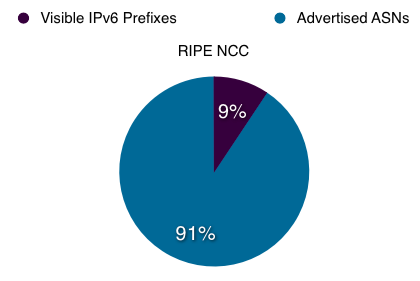
Proportion of ASs in RIPE NCC service region announcing IPv6 prefixes
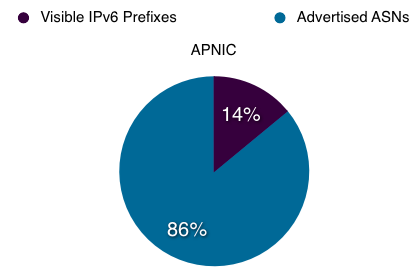
Proportion of ASs in APNIC service region announcing IPv6 prefixes
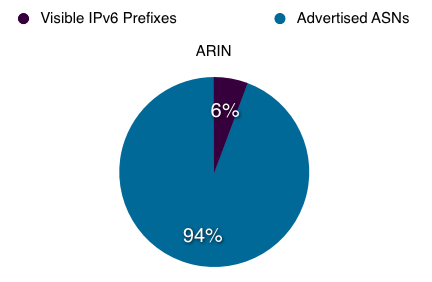
Proportion of ASs in ARIN service region announcing IPv6 prefixes
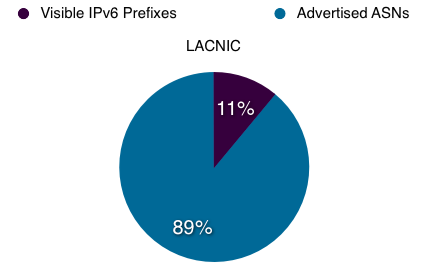
Proportion of ASs in LACNIC service region announcing IPv6 prefixes
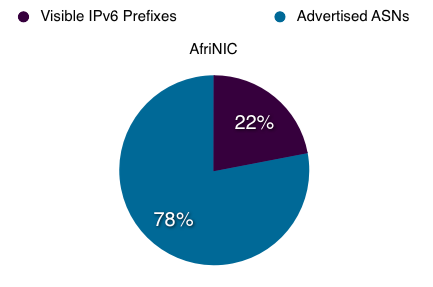
Proportion of ASs in AfriNIC service region announcing IPv6 prefixes
Abkhazia, Kosovo, South Ossetia, Transnistria⊠My oh my.
Every year there are new world events that see possible border changes and a restructure to the way the worldâs countries and territories are configured. Think back to 50 years ago, and the worldâs map was very different. There are literally a hundred countries that exist today that did not exist a hundred years ago. I wonder what country code the Ottoman Empire would have?
As these events occur, ICANN invariably receives requests to recognise new sovereign entities. In some cases we see very inaccurate press reports by âexpertsâ on how country codes will be assigned. Thankfully, we have a very clear process for this that it is worth repeating.
I said in a blog post a couple of years ago the following:
Another thing ICANN is not involved in is deciding the actual codes, or what constitutes a country eligible for a code. Valid country codes are defined by the ISO 3166-1 standard, which is used internationally not just for domain names â but for physical mail routing, currency codes, and more. The ISO 3166 Maintenance Agency is responsible for keeping the list of codes up to date, taking advice from the United Nations Statistics Office on what constitutes a country eligible for a country code.
By ensuring ICANN is not tasked with deciding what country codes are valid, ICANN can focus its coordination role by ensuring the country-code domains in the DNS root zone match those allowed by the ISO standard. When new countries are formed, new ISO codes are created, and ultimately they can be added as new country code domains. Similarly, countries disappear, their codes are revoked, and they are retired from the DNS root zone.
It is as true today as it was when this policy was introduced in the mid-1980s. We have a more formal description up online, but fundamentally recognition of a new entity that might be granted a country code originates with recognition by the United Nations. Once that occurs, it will kick off a chain of events that will see a new two letter code added to the ISO 3166-1 standard. Once it is in that standard, IANA will accept applications from suitably qualified candidates to operate the country code domain (see our delegation process described here).
This is what happened most recently in the case of Montenegro. In June 2006 it declared independence, was recognised by the United Nations, and added to the ISO 3166-1 standard in September 2006. Some time after this, the Government of Montenegro approached ICANN for delegation, and once the formal process was concluded, .ME was added to the DNS root zone in September 2007.
As at this time, Abkhazia, Kosovo, Transnistria, Somaliland, South Ossetia and others are not in the ISO 3166-1 standard, so ICANN is not in a position to grant any corresponding country-code domain for them. By strictly adhering to the ISO 3166-1 standard, we ensure that ICANN remains neutral by relying upon a widely recognised and impartial international standard.
Asia-Pacific Registry/Registrar Regional Gathering Concluded
On 10-11 September 2008, ICANN hosted its third Asia/Pacific regional gathering in Seoul, Korea. The regional gathering approach to broadening participation in the ICANN process for gTLD registries and ICANN-accredited registrars was first introduced in February 2005 in Brussels, Belgium. And, since that time, ICANN has conducted annually three outreach events â one each in the Asia/Pacific, Europe and North America regions. As the participation in the community continues to expand to all parts of the world, ICANN anticipates adjusting the model to include other areas such as Latin America/Caribbean Islands, South America, Africa and the Middle East.
The event in Seoul was the largest gathering to date with more than 68 participants representing 26 registrars and six registries. And, of the 56 registrar participants, 54% reported that they had not previously attended an ICANN meeting. Also, for the first time since the inception of the gatherings, presentation materials were provided in Chinese, Japanese and Korean. Additionally, clean and red-lined versions of the RAA and proposed changes were provided in the same languages.
Topics presented at the gathering included a summary of the outcomes of the recent Paris meeting, proposed amendments to the RAA, protection of registrants (registrar data escrow/interim terminated registrar transition plan and registry failover), IDNs, new gTLDs, compliance/UDRP, GNSO policy items, IPv4/IPv6, and recent Board actions around the Add Grace Period (AGP).
The event was supported through generous contributions from DotAsia, Afilias and NeuStar.
For further information about this event, please contact Craig Schwartz or Tim Cole.
Noticias em PortuguĂȘs
Como Brasileira, e uma grande satisfação poder ler as noticias publicadas pela ICANN em PortuguĂȘs. Espero que isso aumente a participação e interesse dos internautas no Brasil e outros paises de lingua portuguesa. A ICANN agradece o Registro .br por ter dedicado tempo e recursos nessa iniciativa. Um grande exemplo de cooperação e parceria.
http://www.icann.org/pt/announcements/
Karla Valente
Diretora de Programa das Novas GTLDs, ICANN
Home | Web development | Ajax | Web accessibility | Web design | Web development software | Web security exploits | Web syndication | Web technology | Website management | News | License
Web Design & Development Guide, made by MultiMedia | Websites for sale
This guide is licensed under the GNU
Free Documentation License. It uses material from the Wikipedia.
|  |



